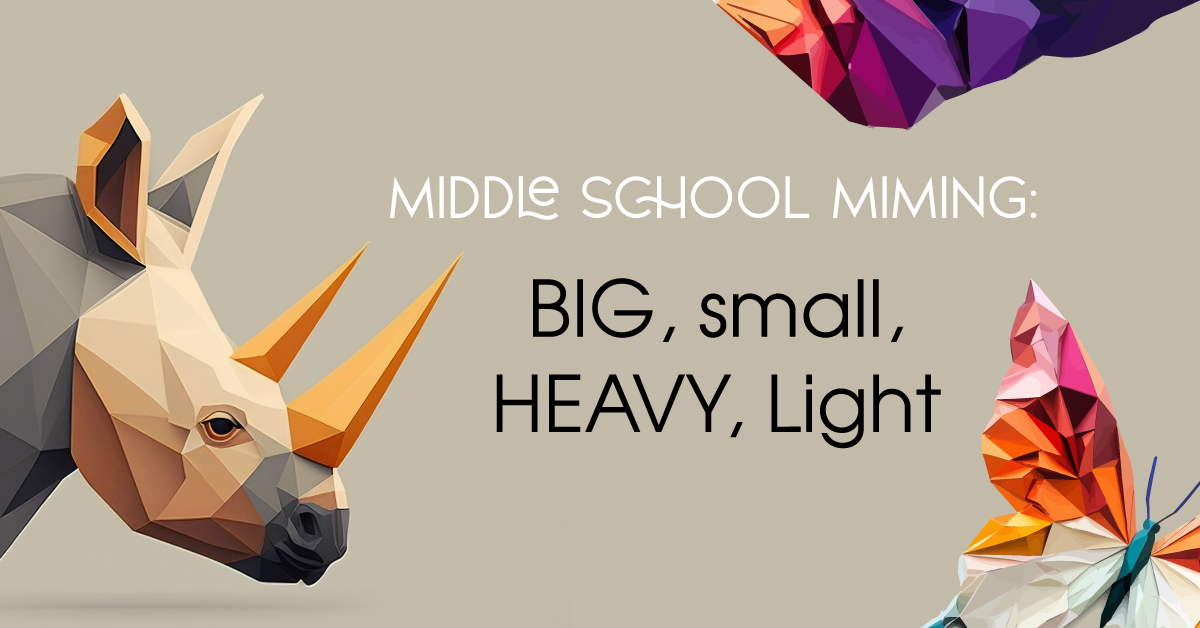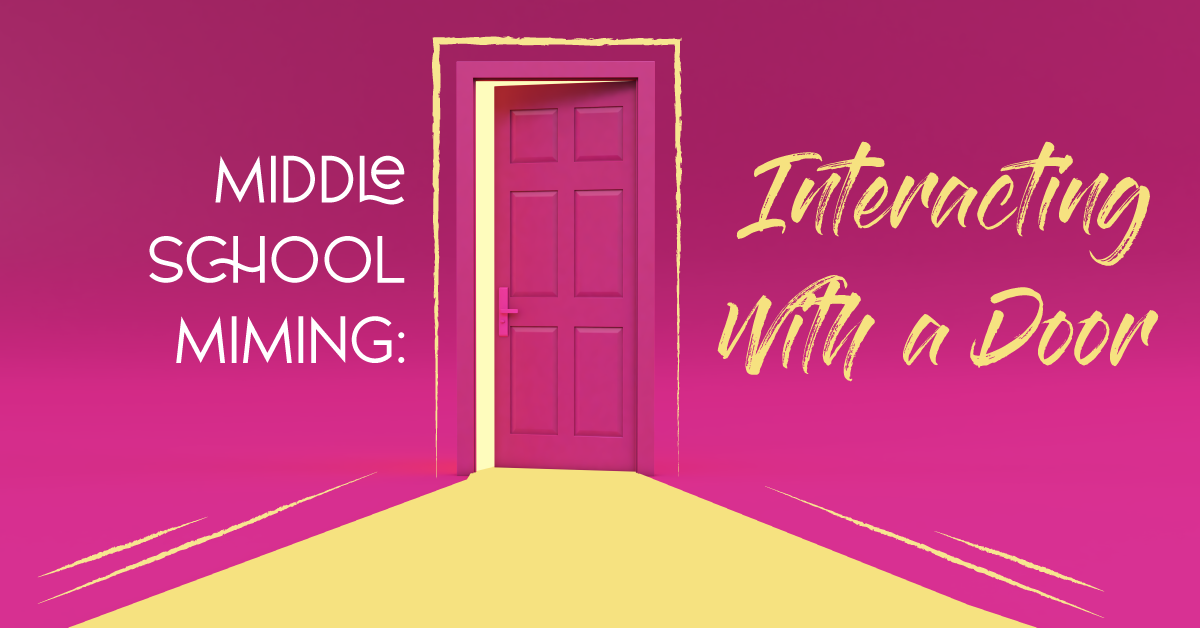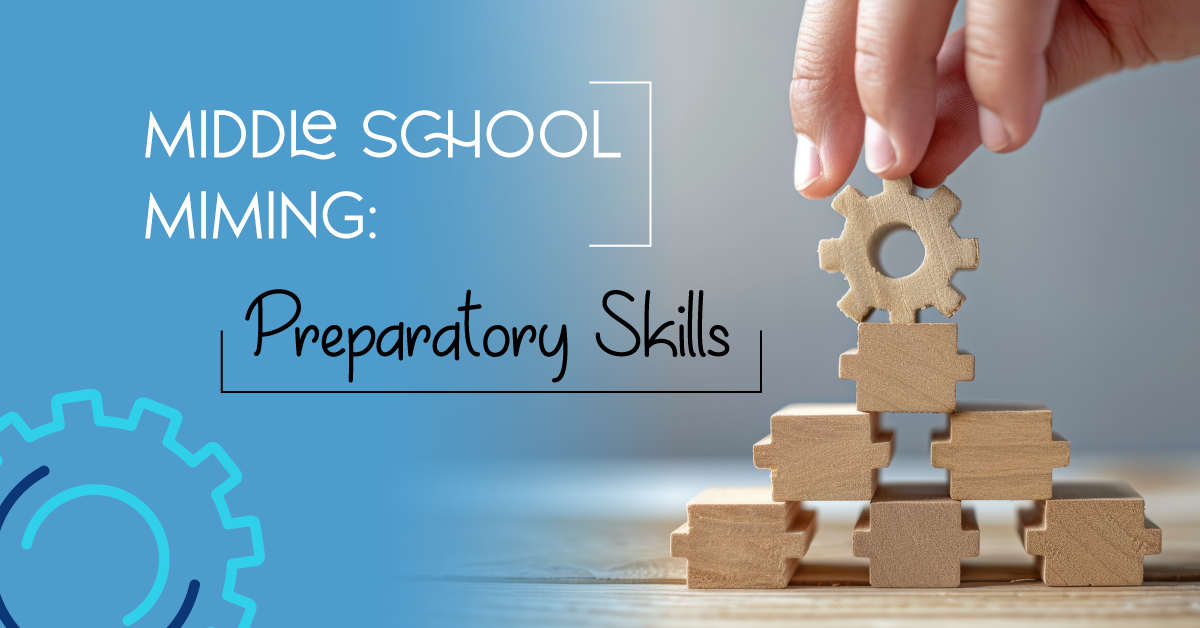With Liberty and Justice For All is a powerful, timely piece that brings student voices to the forefront at a BLM protest - where stories are shared, community is built, and the stakes are real.
Middle School Miming: Still, Slippery, Sticky
In our previous Middle School Miming article, students explored using their hands and arms to maneuver invisible objects of various sizes around a circle. Now, we’re adding moving throughout the classroom space to our miming. When they’re moving around the room, encourage students to be on high alert about crashing into another student. This is called spatial awareness — being mindful of your surroundings and being able to navigate safely through your physical environment.
At this beginning stage, movements should be slow and purposeful. This helps students to make solid physical choices and interactions with mimed objects clearer and easier for the audience to understand. Students should use all parts of their bodies and faces to elevate their mime work. They should also continue to use a “beginning, middle, and end” framework. This can be as simple as entering the space in character, interacting with the various challenges/obstacles (listed below), and exiting the space in character. And remember: no talking is necessary for any of these exercises!
You’ll need a small bell or buzzer for this exercise. Alternatively, the teacher can clap their hands when needed to indicate when a movement starts or ends. If your students need a visual cue, wave a small flag or hold up a small sign.
Instructions
Warm-Up: Have students warm up by playing a partner version of Follow the Leader. Have them split up into pairs. Partner A will walk slowly around the room — this is to make it easier for Partner B to follow them precisely. They should start by walking as they usually do, before adding any character walk choices. Partner B will follow them, trying to copy Partner A’s exact walk. Focus on details like the pace of their walk, the size of their steps, how their arms move, if their gait is bouncy or smooth, and so on. Make sure both partners get a chance to be the leader.
For the main part of the exercise, have all the students gather on one side of the room. Three or four students will cross the room at a time to the other side. Have students walk slowly across the room to the other side so they can focus on accuracy rather than speed. At various times throughout the exercise, they’ll complete the tasks listed below.
1. Still: Students will use their visualization skills to imagine that the path in front of them is booby-trapped with floor traps or rays coming from the walls that will freeze them in stillness. At various times while students walk across the floor, the teacher will ring a small bell and students will stop moving (like they’ve been caught by a trap) and hold a still pose. When the teacher rings the bell again, students will continue moving across to the other side of the room. Repeat as many times as you wish while students are on their path. To keep the pace going, have the next round of students enter when the first round is halfway to two-thirds of the way across the floor.
2. Sticky: Before they start to move, have students use their visualization skills to imagine that the path in front of them is littered with wads of chewed up gum, sticky mud puddles, or blobs of glue. Have students walk across the floor, then when the teacher rings the bell, they will step onto a “sticky” spot on the floor. They’ll show to the audience that their foot is stuck by trying to lift it (just their foot, or by grabbing their leg with their hands and trying to pull it), moving the rest of their body around the sticky spot, pretending to pull really hard away from the spot — any action that demonstrates a concerted effort.
When the teacher rings the bell again, students will manage to “peel” their foot off the sticky spot (with much difficulty) and carry on crossing the floor. Have students explore being extremely careful not to touch another sticky spot, avoiding stepping down hard on the sticky foot lest they get stuck again, or getting their food stuck again and having to repeat the process. They could also have a nearby classmate help them get “unstuck.” Have the next round of students enter during the next bell ring to keep the pace going.
3. Slippery: This is the most challenging and risky of the three explorations, so approach this one with caution! Have students use their visualization skills to imagine that the path is covered in ice or slime. Have them enter the space, then when the bell is rung, slow down and very gingerly step, slide, or glide across the floor (as best they can, especially if the floor is carpeted). Please avoid full-out falling unless your students have done safe fall training with a fight director. As well, they should avoid reaching out for friends to “steady” themselves, as they might inadvertently pull them over. Students might explore getting lower to the ground and crawling or shuffling on their bottoms across the “slippery” surface, or acting skilled with slippery surfaces as a skater or skier.
After the exercise is complete, students will fill out and submit an exit slip (found below).



